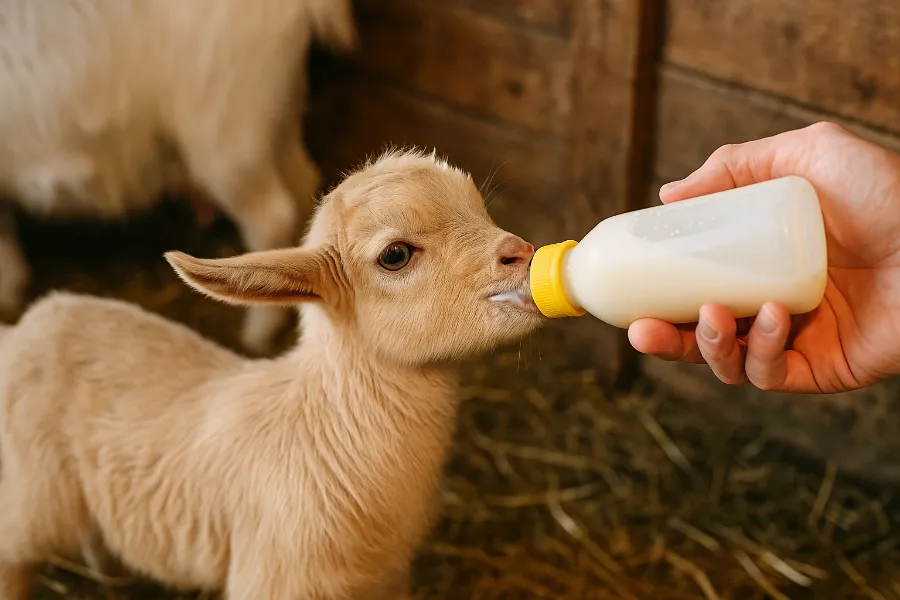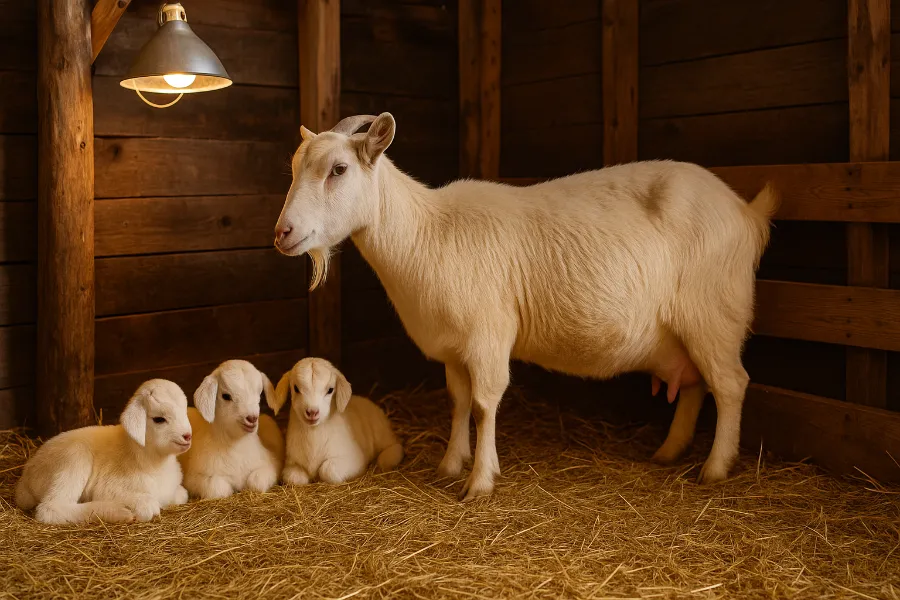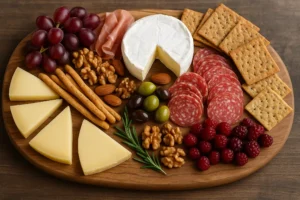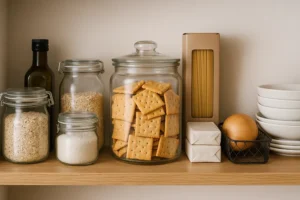When it comes to raising goats, nothing compares to the moment a doe gives birth — and when three tiny heads pop out instead of one or two, your heart races for all the right reasons.
Over the years, I’ve learned that managing goat triplets is equal parts preparation, patience, and presence. It’s not just about surviving the chaos of kidding day — it’s about giving every kid the best start possible.
In this guide, I’ll share my tried-and-true goat triplets birth management tips — the same ones that helped me turn those wobbly newborns into strong, thriving herd members. Whether you prefer traditional care or modern farm technology, these lessons will help you raise your triplets with confidence and calm.
Bottle Feeding Goats — What I’ve Learned the Hard Way

When a doe gives birth to triplets, you quickly realize there are only two teats and three hungry mouths. That’s when bottle feeding goats becomes essential. I used to think bottle feeding was only for orphaned kids, but it’s now one of my core strategies for triplet survival.
Here’s my go-to routine:
- Feed warm milk at 100–102°F — just like it would be from the mother.
- Start with 6–8 small feedings per day, reducing as the kids grow stronger.
- Always burp them gently after feeding to avoid bloating.
- Rotate kids so each has equal access to both mom and bottle.
Bottle feeding isn’t just about nutrition — it builds trust. Those hand-fed moments make kids friendlier, easier to handle, and more social later on.
Goat Colostrum — Why It’s the First Golden Rule
Every experienced goat keeper will tell you the same thing: goat colostrum saves lives. It’s the thick, antibody-rich milk that the doe produces right after birth. For triplets, colostrum is non-negotiable — it’s the immune shield every kid needs.
My rule: every kid gets colostrum within the first two hours of life.
If the smallest kid can’t nurse, I milk the doe and bottle-feed it. Sometimes I freeze extra colostrum from other does so I’m never caught unprepared. And if I absolutely must, I’ll use a colostrum replacer — but I always prefer the real thing.
That first 24 hours sets the foundation for every health milestone that follows.
Goat Barn — Building a Safe Haven for Kidding Season
A clean, cozy goat barn is the heart of every successful kidding. When I know a doe is due, I prep the barn like I’m expecting family.
Here’s what I make sure of:
- Fresh straw or wood shavings, changed daily.
- No drafts — but good airflow to keep humidity low.
- Heat lamp or warming box ready (especially for winter births).
- Private 4×6 kidding pen for mom and babies.
- Towels, iodine, and gloves within arm’s reach.
If your barn has electricity, a small camera helps you monitor overnight without constant trips outside. That peace of mind is priceless — especially when triplets arrive in the middle of a cold night.
Goat Tracking — Say Hello to Smarter Goat Management

Back when I started, my “tracking system” was scribbles on scrap paper. Now, I use goat tracking tools to log everything — and it’s changed my kidding seasons forever.
I record:
- Birth order, time, and weights.
- Which kid fed first (and who needed help).
- When they received colostrum.
- Temperature and weight gain during the first week.
You can use a simple app or even a spreadsheet, but the key is consistency. Goat tracking helps spot early signs of trouble — a slow-gaining kid, a doe with low milk output — before it turns into a crisis.
Goat Milk Replacer — Say It’s Okay to Have a Backup Plan
No matter how much milk a doe gives, sometimes it’s just not enough for three. That’s when I reach for a goat milk replacer.
I learned the hard way that not all replacers are equal. Cow-based formulas upset their digestion, so I only use replacers made specifically for goats — high in fat and protein, and with added vitamins and probiotics.
Pro tip:
Mix small batches. Always serve warm, not hot. And sanitize bottles after each use — milk residue breeds bacteria faster than you’d expect.
A replacer won’t replace mother’s milk completely, but it keeps the weakest kid nourished until the doe catches up or the others start nibbling solid feed.
Goat Temperature — Say You Can Tell a Lot by Touch
A goat’s temperature is the window into its health. For newborn triplets, I check it constantly in the first day.
Normal range: 101.5°F–103°F
If it drops below 100°F — that’s an emergency. Warm them immediately using towels, your hands, or a heat lamp.
If it spikes above 104°F — dehydration or infection might be brewing.
I’ve learned to trust both thermometer readings and my fingertips. A cold ear or stiff belly means trouble. Technology helps — digital thermometers or even thermal imaging cameras make it easier — but intuition matters most.

Goat Bottle Feeding — Say Patience Makes All the Difference
Bottle feeding is equal parts science and heart. Every kid has its rhythm. Some latch immediately, others fight the bottle like it’s the enemy.
When I bottle feed, I mimic how the mother stands — bottle angled slightly downward, kid’s head up. I let them suckle slowly. If they gulp, I pause to avoid choking. I feed on a schedule and stick to it religiously.
It’s amazing how quickly they learn. Within days, my triplets are racing to the feeding spot, tails wagging. That’s the reward of patience — watching them thrive because you showed up.
Goat Breeding — Say the Secret Starts Before Birth
Triplet births don’t just happen by luck. They’re rooted in goat breeding decisions. Healthy genetics, good nutrition, and proper timing make all the difference.
Here’s what I focus on:
- Only breeding does with strong histories of safe births.
- Keeping does at optimal weight — not too fat or thin.
- Supplementing with minerals before breeding season.
- Flushing feed (adding extra grain) before breeding to encourage multiple ovulations.
And most importantly — never breed for triplets unless you’re ready to manage them. Multiples are a blessing, but they come with extra work. Breed smart, not just big.
Dairy Goats — Say They’re Built for Multiples
My love for dairy goats runs deep. Nubians, Alpines, and Nigerians — they’re natural mothers and generous milkers. But when they birth triplets, that generosity gets stretched thin.
Here’s my care checklist for dairy does after triplet births:
- Boost feed with alfalfa hay and grain for energy.
- Offer warm molasses water right after kidding.
- Check udder twice a day for even fullness.
- Massage teats gently to keep milk flowing evenly.
The goal is balance — keeping her milk production high without exhausting her. A happy dairy doe means happy triplets.
Goat Milk — Say It’s the Heart of Every Healthy Herd
Goat milk is more than a product — it’s life itself on a small farm. Watching triplets nurse evenly is one of the best sights in the barn. But I also keep an eye on fairness — weaker kids can get pushed aside.
If one kid looks hungry, I’ll milk the doe and feed it by hand. I also note how full the udder stays after nursing — that’s my signal of milk supply balance.
Modern tools like milk meters help large farms track volume precisely, but for me, touch and timing are just as reliable. Milk is the heart of goat farming — and every drop counts.
Farm Technology — Say It’s the Modern Shepherd’s Friend
I used to think gadgets didn’t belong in the barn. Then I realized they can save lives.
Farm technology now helps even small homesteads like mine manage triplets efficiently.
My favorite tools:
- Barn cameras with motion sensors for nighttime alerts.
- Smart thermometers that send readings to my phone.
- Digital scales that track kid growth daily.
- Feed timers for automated bottle-feeding intervals.
- Goat tracking apps that organize herd data.
Technology doesn’t replace experience — it enhances it. With these tools, I can manage my herd even when life pulls me away from the barn.
Raising Goats — Say It’s About Heart, Habit, and Hope

At the end of the day, raising goats isn’t just about equipment or methods — it’s about heart. You learn by doing, and sometimes by failing. You’ll sit on a cold barn floor at 3 a.m., coaxing a weak kid to drink. You’ll celebrate when all three stand on their wobbly legs and nurse together.
Every kidding season teaches me something new.
Triplets remind me that nature rewards patience and preparation.
Technology reminds me that even an old-fashioned homesteader can evolve.
And those tiny bleats remind me why I do this — because nothing compares to seeing life begin, right there in your hands.
Final Thoughts: My Personal Goat Triplets Birth Management Tips Recap
If I could boil it all down, my best advice is this:
- Get your goat barn ready early.
- Have colostrum and goat milk replacer on hand.
- Learn your doe’s rhythms through goat tracking.
- Stay alert with temperature checks.
- Master bottle feeding before you need it.
- Use farm technology as your safety net, not your crutch.
- Always breed and raise goats with respect for their limits — and your own.
Triplets test your skills but reward your soul. Every healthy kid that bleats in the straw is a little victory — one that proves that love, patience, and good management still matter more than anything else in the barn.
FAQs
Start by preparing a clean, draft-free goat barn, ensure each kid gets colostrum within two hours, and be ready to supplement with bottle feeding if needed. Monitoring temperature and weight gain is key to keeping triplets healthy.
Newborn triplets need feeding every 3–4 hours for the first few days. Gradually reduce to every 6 hours as they grow stronger and begin to eat solid food.
It’s best to use a goat milk replacer designed for kids. Cow milk can cause digestive issues and lacks the right fat and protein balance for goat triplets.
Use deep straw bedding, block drafts, and add a safe heat lamp or warming box. Keep the area dry and clean to prevent illness and hypothermia.
Goat colostrum provides vital antibodies and nutrients that strengthen the immune system. It helps triplets regulate body temperature and fight infections during their first critical hours.
Normal goat temperature is 101.5°F–103°F. Anything below 100°F suggests hypothermia, while above 104°F could mean dehydration or infection.
Modern tools like goat tracking apps, digital thermometers, and barn cameras help monitor health and feeding schedules. They ensure consistent care and early detection of issues.













